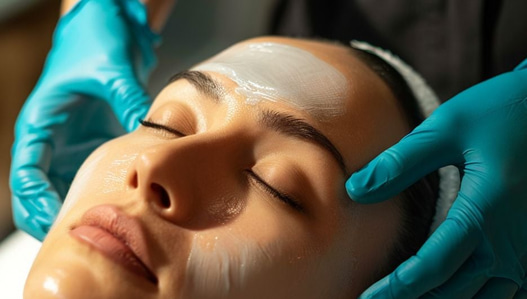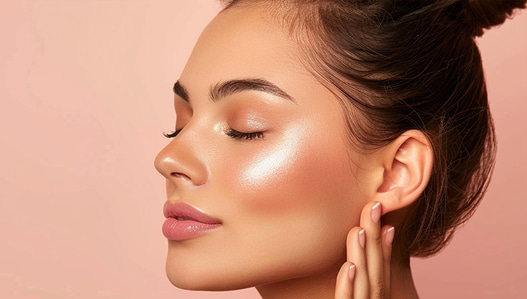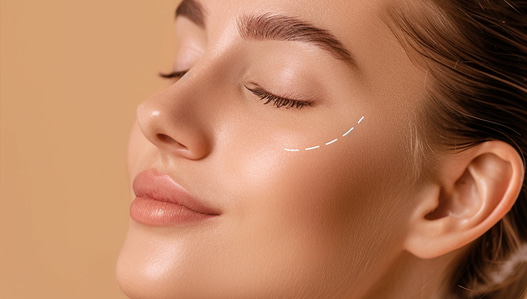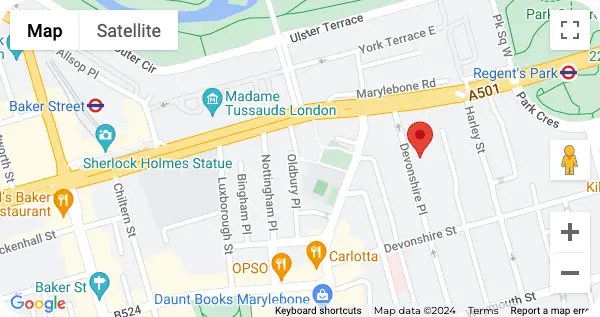Losing hair that may impact one’s confidence and self-esteem can be very irritating. If you’re thinking about a hair transplant surgery, you may be asking yourself: How long do hair transplants last? The positive side is that modern hair restoration techniques yield permanent, natural-looking solutions, provided you take care of your scalp properly. In this guide, we will discuss everything you need to know, from the details of the procedure to aftercare and the cost. Whether you’re still considering your options or ready to move forward, we’re here to help.
Summary: Key Takeaways
- Hair transplantation, which works with both FUE or FUT techniques, offers a permanent solution to hair loss.
- Most transplants last a lifetime, but different outcomes depend on genetics, and how individuals care for themselves after surgery.
- Aftercare is essential for maintaining results, with treatments such as Finasteride or Minoxidil.
- The procedure is minimally invasive and mildly discomforting, managed by local anesthesia.
- Prices depend on the number of grafts, the reputation of the clinic and the experience of the surgeon.
- Costs vary depending on the number of grafts, clinic reputation, and surgeon expertise.
What is a hair transplant?
A hair transplant is a surgical procedure that relocates hair follicles from one part of the scalp (or body) to the thinner or balding region. The process aims to rejuvenate hair growth, giving a full and youthful look.
What are the different types of hair transplant?
There are two major kinds of hair transplant procedures:
- Follicular Unit Extraction (FUE): In this process, hair follicles are extracted individually and implanted into the thinning areas, resulting in minimal scarring and a natural look.
- Follicular Unit Transplantation (FUT): This method involves removing a strip of scalp containing healthy follicles, which is then dissected and transplanted. This approach is more invasive but can yield a higher number of grafts in a single session.
Who can get a hair transplant?
Hair transplant can be possible for both man and woman who experience hair loss as a result of genetics, some medical condition, or trauma. Best candidates have ample donor hair and realistic expectations for results.—
Both men and women experiencing hair loss due to genetics, medical conditions, or trauma can benefit from a hair transplant. Ideal candidates have healthy donor hair and realistic expectations regarding results.
How are hair transplants performed?
Step-by-step guide to a hair transplant
- Consultation: A specialist assesses hair loss and recommends the best technique.
- Preparation: The donor area from where the hair would be extracted is trimmed and local anesthesia is applied.
- Extraction: A healthy hair follicle is collected via FUE or FUT.
- Implantation: The harvested follicles are delicately implanted into thinning areas.
- Healing and recovery: Patients get aftercare instructions to maintain the best outcome.
FUE (Follicular Unit Extraction):
- These involve the careful removal of individual hair follicles, one by one, from the donor area.
- This leaves tiny dot-like scars that are barely visible.
- Perfect for anyone who wears a shorter haircut.
- Healing time is much faster (typically under a week).
- It takes a little more time than FUT.
FUT (Follicular Unit Transplantation):
- A strip of skin with hair follicles that is removed from the back of the scalp.
- The follicles are then dissected and grafted into thinning areas.
- Leaves a linear scar, which can be concealed with longer hair.
- Can place more grafts in a single session.
- It takes a longer time to recover than FUE.
Are hair transplants successful?
Countless patients have experienced successful results with hair transplants carried out at Harley Street Skin Clinic. Patients have reported experiencing natural-looking and long-lasting hair restoration with skilled surgeons and cutting-edge technology.
How long does it take a hair transplant to heal?
Hair transplant recovery generally lasts 7 to 10 days, with swelling and redness subsides in the first two weeks.
Is anaesthesia used for hair transplants?
Yes, the scalp will be numbed with local anesthesia to make the procedure comfortable and pain-free.
How long do hair transplants last?
Hair transplants are meant to be permanent, as the transplanted follicles still retain their hair-loss resistance. Still, some patients may need touch-ups later on.
Factors that influence longevity:
- Genetics: Certain people may keep losing non-transplanted hair as time goes on.
- Age: Younger patients may require follow-up procedures as the pattern of their loss changes.
- Post-surgery care: Good aftercare and medications like Finasteride improve long-term results.
Are hair transplants permanent?
Yes, however, hair thinning may continue in untreated regions so you may need to have follow-up hair growth treatments or maintenance.
Hair transplant aftercare: how to ensure long-lasting results
Harley Street Skin Clinic also provides a full aftercare plan, including check-ups and even specialist treatments to encourage hair growth and promote healing.
So, what are the best post-surgery hair maintenance treatments to help you boost and protect your hair transplant results?
- Hair loss medications that aid hair growth
- Minoxidil: Topically applied hair-growth stimulant, often used to maintain transplanted hair.
- Finasteride: An oral medication that prevents additional hair loss by blocking DHT, the hormone that causes hair thinning.
- Hair rejuvenation treatments
- Platelet-Rich Plasma (PRP) Therapy
- Low-Level Laser Therapy (LLLT)
- Regenera
- Proper scalp care and hygiene
- Use gentle, sulfate-free shampoos to avoid agitation.
- Stay away from direct sunlight or harsh chemicals for at least a few months.
- Follow your surgeon’s post-op directions on how to wash and moisturize the scalp.
- Healthy lifestyle and nutrition
- Consumption of protein, iron, and biotin helps to grow hair.
- Hydration, as well as stress management, are also major contributors to overall hair health.
- Regular follow-ups with Your surgeon
- Regular checks make certain your new hair is developing properly.
- If necessary, your surgeon can recommend further treatments.
Recovery Timeline
- First week: Mild swelling and scabbing takes place. Refrain from touching or scratching the scalp.
- Up to one month: The new transplanted hair follicles could fall out, this is a normal part of the healing process.
- After one month: The scalp is still healing.
- Three months: You will see early signs of new hair growth.
- Six Months: Hair thickens, and you will notice improvements.
- One Year: Results are complete, hair appears natural and full.
Caring for your scalp after a hair transplant
- To keep the area clean and aid in healing, use the prescribed shampoos.
- Refrain from vigorous activities for at least two weeks.
- Ensure you are following through on medication and or treatment plans to keep the hair healthy.
- Avoid sun exposure to minimize irritation and protect the scalp.
When can you wear a hat after hair transplant treatment?
You can usually begin wearing a loose-fitting hat about two weeks after the procedure but this can really differ based on personal healing. Allowing the scalp to heal completely without excessive pressure or covering the area too soon can disrupt the new follicles which have been transplanted. Always listen to your surgeon’s direction for the best outcome.
Do hair transplants hurt?
If you are considering having a hair transplant, one of the questions you are probably asking yourself is whether or not the hair transplant procedure is painful. The good news is that today’s hair transplants are meant to be as convenient as possible.
Hair transplants are done under local anesthesia to numb the scalp before starting. This means that while you may feel some pressure or movement, you won’t feel any pain during the procedure itself. Patients compare the sensation to a mild discomfort as opposed to pain.
Following the procedure, some soreness, swelling, or tightness in the scalp is common, though it is typically mild and temporary. Pain management options include prescribed pain relievers or over-the-counter medications to relieve any pain. Most patients resume normal activities in a few days.
So, do hair transplants hurt? The short answer is no, they’re generally well-tolerated and any discomfort can be managed with appropriate care.
Are hair transplants safe?
In the hands of experienced and accredited hair transplant surgeons, hair transplants are regarded as a safe and effective treatment for hair loss. Harley Street Skin Clinic offers best medical expertise and upholds highest standards of patient care and safety with the state of the art techniques.
That said, as with any surgical procedure, there are potential risks. These include:
- Infection: Uncommon, but can occur without proper aftercare.
- Scarring: Scarring is more common with FUT procedures than with FUE, but the scarring is typically minimal.
- Unnatural looking results: Something that can be avoided by selecting an expert with experience in designing hairlines.
A top clinic with very professional surgeons minimizes these risks greatly. Harley Street Skin Clinic offers excellent patient care and unparalleled results.
Can women get hair transplants?
Yes! Hair transplants aren’t only for men. This procedure is also suitable for women experiencing hair loss.
However, reasons for hair loss in women tend to differ from men. Whereas male pattern baldness is most often attributable to genetics and manifests itself as a receding hairline or bald patches, women experience diffuse thinning throughout the scalp. This difference influences how one is treated.
Women who are ideal candidates for hair transplants generally have:
- Localized thinning not widespread loss.
- An adequate area in the donor with sufficient healthy hair to transplant.
- This is very important you have realistic expectations of the outcome.
Thousands of women have had successful hair restoration surgery. Success stories in real life prove that a hair transplant can change you when done by an experienced surgeon- leading to enhanced self-confidence and hairlines that are totally natural-looking.
You can click on this link to read more about Hair Transplant Women.
How much do hair transplants cost?
There are multiple factors that influence the cost of a hair transplant, but at The Harley Street Skin Clinic, it starts around £4,000 and can hit up to £20,000. If you want to know the prices, check out the two primary hair transplant procedures, Follicular Unit Extraction (FUE) and Follicular Unit Transplantation (FUT), which have different cost structures as well.
- Because it requires extracting and implanting hair follicles individually, FUE is usually more expensive.
- FUT will be less expensive, however it leaves a linear scar at the donor site.
What factors affect the cost of a hair transplant?
There are few factors that go together to determine the price of a hair transplant. Here are some of these factors:
- Clinic locations: All treatments in London, particularly on Harley Street Skin Clinic are likely to be higher due to the high standard of care and skill of the surgeon.
- Surgeon experience: As stated previously, highly experienced surgeons will cost more, but they will also deliver better results.
- Number of grafts needed: The more grafts required, the greater the price.
- Procedure type: This is due to the detailer process required, making FUE more expensive than FUT during procedure.
- Extra services: Some clinics provide financing plans, post-op care packages, or platelet-rich plasma (PRP) therapy to optimize results.
We also offer payment plans or financing options for those who are price conscious to help make the procedure more affordable.
What are the alternatives to hair transplants
Not everyone is a candidate for a hair transplant. There are several options for non-surgical treatments for hair loss, including:—
Not everyone needs a hair transplant. There are several non-surgical treatments available for hair loss, including:
- Minoxidil: A topical treatment that slows down and promotes hair loss.
- Finasteride: A prescription tablet that stops hair loss hormones.
- PRP Therapy: Injection of platelet-rich plasma that promotes hair growth.
- Laser Therapy: Use of low-level laser therapy (LLLT) with the goal of increasing hair density.
- Scalp Micropigmentation: Similar to a tattoo, it creates the illusion of active hair follicles by dotting tiny dots on the scalp.
- Regenera: A scalp revitalization that promotes hair follicle regeneration by extracting and reintroducing autologous cells to damaged areas.
These treatments will typically be more suitable if you are in the early stages of hair loss or if you prefer a non-invasive option. Working with a specialist can help determine the right approach.
FAQs about hair transplants
- Will my hair look natural after a transplant?
Yes, a hair transplant, when performed by an experienced surgeon, does give you a natural-looking hairline. Surgeons place grafts meticulously to replicate the patterns of natural growth.
- How many sessions will I need?
Most patients only need one session, though patients with more significant hair loss may require two or more for optimal coverage.
- Can hair transplants fail?
While rare, unsuccessful transplants do happen, and are more likely to occur in patients whose surgeons may not be experienced, who don’t follow aftercare instructions, or who have an underlying medical condition that may affect hair growth cycle.
- What is the recovery time after a hair transplant?
Most patients are back to normal activities within a few days. It can take several months for all hair loss to reverse, and complete results are seen at 12–18 months.
Recent Articles
Benefits of Botox: Cosmetic and Medical Advantages
How to Prepare for Lip Fillers: Everything You Need to Know Before Getting Filler
Exercise after Botox: How long should you wait?
Join 50,000+ Readers Redefining Confidence Every Week
Subscribe to our free bi-weekly newsletter, trusted by thousands, for expert insights into aesthetic treatments, plastic surgery trends, and skincare innovations.

































